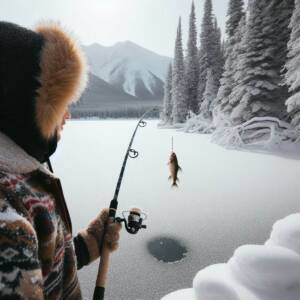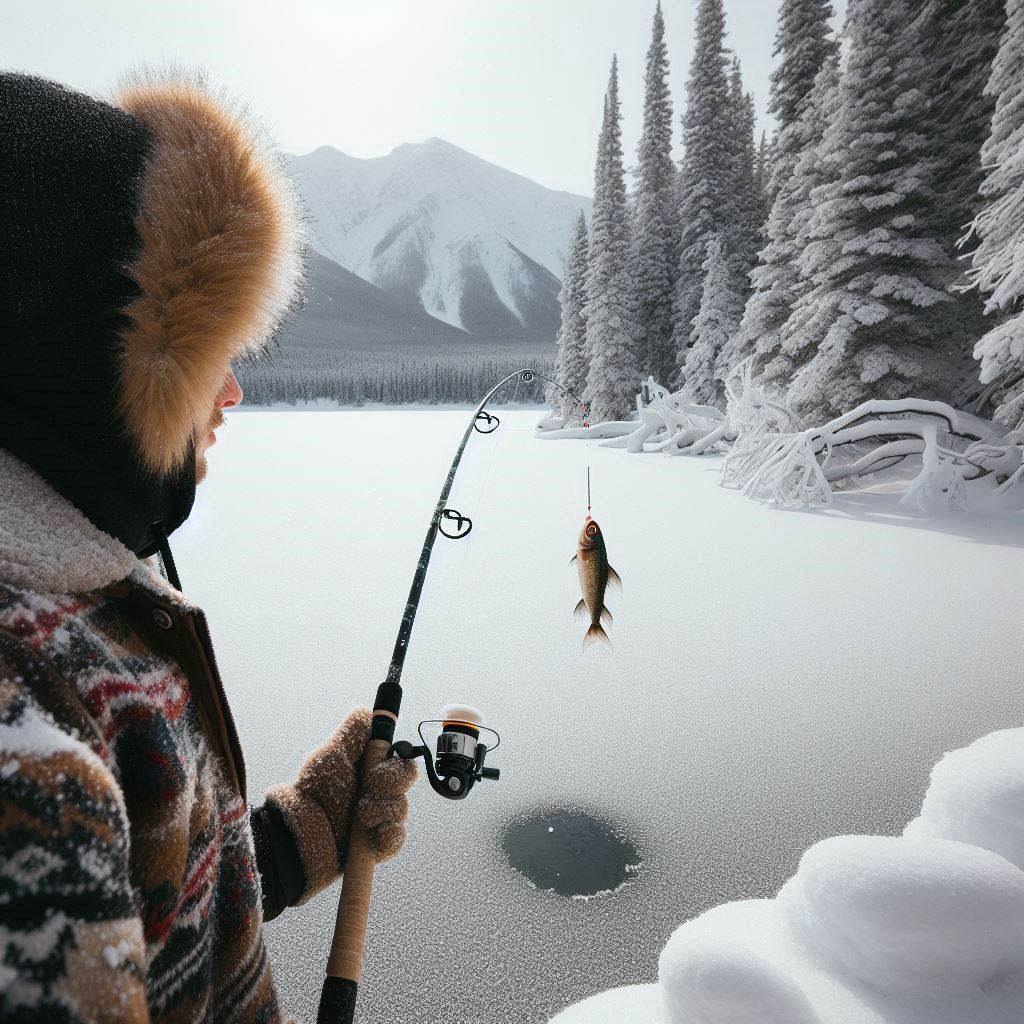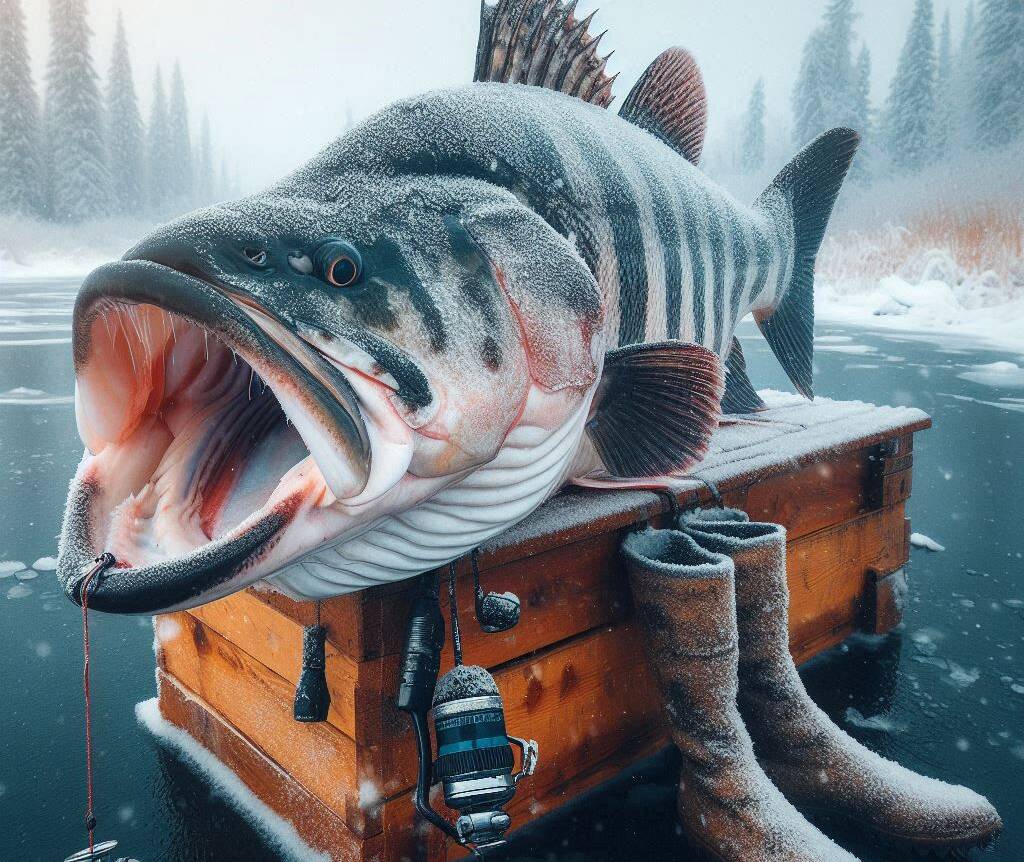Fishermen face new challenges when fishing for river fish in winter, as lakes and rivers freeze over. In winter, jigs are well suited for catching river fish. Their graceful and unique movement attracts predators for active hunting. In this article, we will look at the basic principles of fishing for river fish with a jig in winter, and also give you useful tips that will help you succeed in your fishing adventures.
Contents
- 1. Benefits of Winter Jig Fishing Technique
- 2. Choosing the Right Location for Winter Jig Fishing
- 3. Selecting the Right Equipment for Winter Jig Fishing
- 4. Technique of Jig Size Influencing Winter Fishing Success
- 5. Recommendations on Presentation and Jig Movement Techniques for Winter Fishing
1. Benefits of Winter Jig Fishing Technique
- Productivity. One of the most effective ways to catch river fish in winter is jig fishing. Fishermen can catch a large number of fish in a short period of time using this technique. The jig is an excellent way to awaken fish from winter torpor. The jig attracts the fish’s attention, enticing it to strike.
- Practicality. In winter, it is possible to fish with river jigs in any climate. Even on cold frosty days, fishermen can successfully hunt using this technique. The jig works well in both large and small rivers. The jig is attractive to many species of fish due to its ability to change configuration and weight.
- Pleasant experience. Fishing for river fish with a jig in winter is not only a sporting activity but also a way to relax and unwind. Spending a day outdoors, observing nature, and enjoying the process of fishing helps relieve stress and recharge with positive energy. The jig allows you to enjoy nature and immerse yourself in the peace and tranquility of the winter environment.
2. Choosing the Right Location for Winter Jig Fishing
Successful jig fishing in winter requires choosing the right location. The following criteria should be considered when selecting a fishing spot on the river in winter:
- Depth. The best places for jig fishing are usually found at depths of 3 to 8 meters. Fish seek quieter zones under the ice, where they can feed and rest.
- Bottom structure. When selecting a spot, attention should be paid to areas with uneven bottom structures, such as pits, ravines, channels, or places where the ice splits. These areas attract fish as they provide natural shelters and hiding places.
- Currents. The flow of water often attracts fish because it carries natural food particles and oxygenates the water. You should look for spots with under-ice currents where fish may be actively hunting.
When choosing a place for jig fishing in winter, pay attention to other fishermen, as their presence may indicate that there is fish. By asking experienced fishermen or reading reviews on forums and social media, you can learn about popular fishing spots.
Remember, the choice of a place for jig fishing in winter depends on many factors, including the type of fish, weather, and other conditions. To enjoy fishing, experiment and learn to find the most popular and profitable places.
3. Selecting the Right Equipment for Winter Jig Fishing

Choosing the right equipment for winter jig fishing is critical to success. In winter, fish become more selective and agile. Therefore, it is necessary to have the right tools to maximize success.
First of all, it is important to choose the right fishing rod. To successfully manage the jig, it must be stiff yet flexible. Additionally, rods with stiffening strings are not ideal; it is better to choose rods that are either “economy” or “soft.”
A properly chosen reel is an important part of the equipment selection. It should be durable and able to withstand significant loads. It is recommended to use a reel with a smooth finish to ensure a smooth fish landing. Keep in mind that the reel should match the chosen rod and balance well with it.
4. Technique of Jig Size Influencing Winter Fishing Success
The success of jig fishing in winter largely depends on the size of the lure used. In this section, we will examine how the size of the jig affects the effectiveness of fishing and how to choose the optimal size for catching river fish.
Impact of jig size on fish response
- Using a small jig allows you to attract active fish as they perceive the small lure as easy prey.
- Increasing the size of the jig helps to attract larger fish that see it as interesting and substantial food.
- The optimal size of the jig depends on the type of fish and fishing conditions, so it is necessary to experiment and analyze the fish’s reaction to different jig sizes.
Impact of jig size on the fish caught
- Using a small jig allows you to catch more fish because they quickly and easily accept this bait.
- A large jig can attract bigger fish, but its use may reduce the number of catches as it requires more effort from the fish.
- The size of the jig also affects the type of fish caught, so selecting the optimal size allows for a greater variety of catches.
5. Recommendations on Presentation and Jig Movement Techniques for Winter Fishing
The winter season is challenging for catching river fish, but by using the right technique and methods, jig fishing can significantly increase the chances of a good catch. The main goal in winter is to ensure the correct presentation of the jig and to maximize its attractiveness to the fish. In this section, we will look at some recommendations on how to present the jig and conduct the bait properly when fishing for river fish in winter.
- Choosing a flashing jig: During the winter period, fish require more active and attractive lures. Choose a jig with shiny and bright details, colorful feathers, or beads. This will help draw the fish’s attention and enhance the imitation of live prey.
- Adjusting the depth: A crucial aspect of winter river fishing is adjusting the jig’s depth. Fish usually stay near the bottom, so it is essential to set the bait at a depth where it remains close to the bottom. This can be achieved with special weights or hooks for depth adjustment.
- Jig movement: An effective way to attract fish during winter fishing is jig movement. It is recommended to move the bait unevenly, jerking it, making pauses, and mimicking the natural movement of live prey. This approach will help attract the fish and provoke it to bite.


Leave a Comment
Your email address will not be published. Required fields are marked *